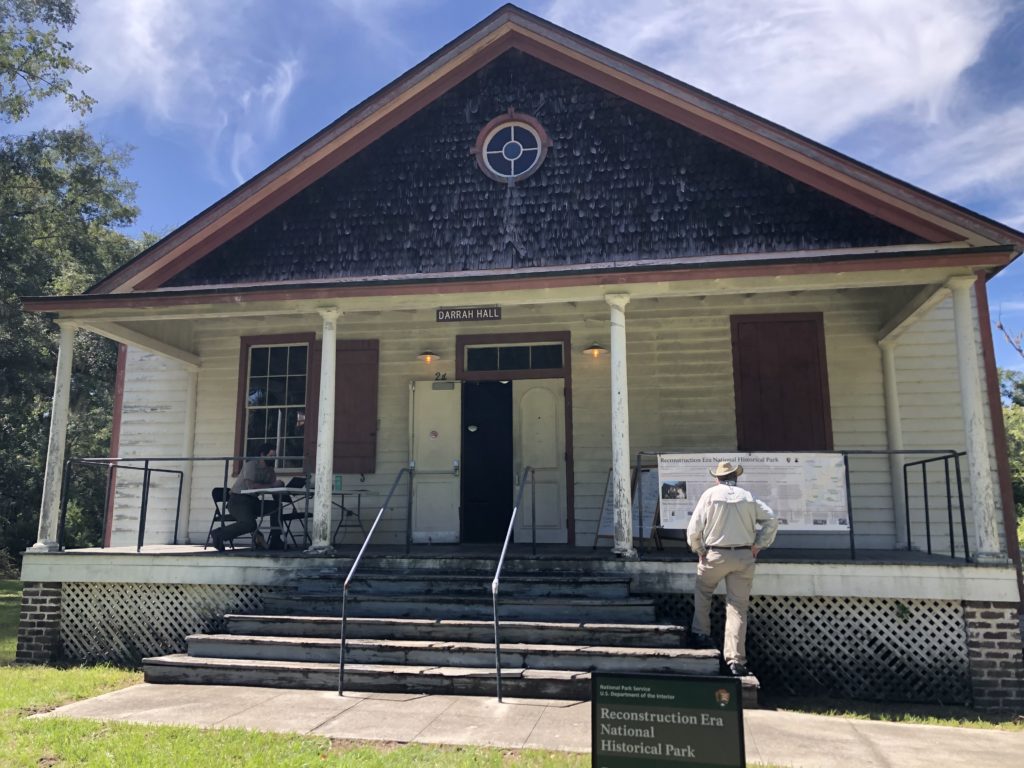HELENA ISLAND, S.C. — In the heart of South Carolina’s Lowcountry sits a small island community whose size and stature belies its tremendous history and rich culture.
The story of St. Helena Island is rooted in America’s Reconstruction Era and runs through the Civil Rights Movement, arching from Martin Luther King Jr. to former President Barack Obama. Northern abolitionists founded the Penn School here to teach formerly enslaved laborers.
Today, it’s the center of Gullah-Geechee culture and community in the Lowcountry — a term that refers to the descendants of enslaved African-Americans in the coastal plains and islands of South Carolina, Georgia and Florida.
The art, cuisine and spirituality of the Gullah-Geechee blend West African and Southern influences, and they speak the creole language of Gullah. Closeness to the land, said St. Helena farmer and community leader Sara’ Reynolds Green, is a defining characteristic of the Gullah community.

But that cherished relationship is being threatened as islands like St. Helena see increasing development, and knowledge of Gullah traditions dies out with Gullah elders and families who have lived on the island for generations loose large swaths of land at county delinquent tax sales, Green said.
Her family has owned their land since 1863, when her great-grandfather Robert Green bought 10 acres to pass onto the next generation. The land is an example of “heirs’ property” — land passed through generations of Gullah families, usually without clear title or will.
The lack of title can lead to confusion over who is responsible for taking care of the land and paying the taxes, which is how many of the properties end up at tax auctions. This year, Green has led an effort to raise funds for St. Helena families who are delinquent on their property taxes. And, in light of the COVID-19 pandemic, she and other land preservation advocates called on state leadership to delay the sale to give people more time to pay off their taxes. The tax sale did not get delayed from its Oct. 5 date, but thanks to legislation signed into state law in early October, property owners who lost land in the 2019 delinquent tax sale now have an extra year to redeem their property due to the special circumstances of this year. Normally, property owners have a year and a day from the date of the tax sale to redeem their property if they can pay for it.
Get the Latest Dispatches from across America
Sign up for our weekly On the Ground round up
At the tax sale, 56 properties across St. Helena Island sold for a total of $602,218.76. Altogether, they owed $48,041.75.
The amount owed had been dropping every day as property owners came up with the funds on their own or got relief from nonprofits and fundraisers.
Tax sales offer potential buyers the opportunity to purchase large amounts of land for relatively cheap.

“As a Gullah person, I believe that our history and our culture is so important, a treasure,” Green said. “Treasures are to be maintained, and protected, and preserved — not just preserved, but to thrive, and to become as much a part of the community as they can. I don’t see where we are being treasured … and that bothers me, because I think our presence on this island is the foundation of the island, and if your foundation is weak, then the rest of the island is weak as well.”
Riverfront mansions and specialty food shops dot the marshy landscape, capturing a community at a unique point in time — not completely within the grip of development like some of its neighbors but certainly not immune to it. Narrow roads hold the balance on St. Helena, cutting between pastel estates on one side of the street and mobile homes on the other.
“Many outsiders don’t embrace the culture,” Green said. “They have chosen to be here. We were brought here.”

The easy and slow way of life marketed to readers of travel magazines is far from a reality for many St. Helena residents. Workers lack public transportation, options for jobs and living wages, but the average income on the island is driven up by wealthier, older people who move in.
Fortunately, Green said, she knows some people who have moved in who have embraced the Gullah identity of the island instead of turning away from it.
“As our community starts working together as a unit, we will build this community and make a lasting community and a very fruitful community for all,” she said. “And not just for some.”
Kate Hidalgo Bellows covers workforce and livability issues for the Island Packet. This dispatch is part of a series called “On the Ground” with Report for America, an initiative of The GroundTruth Project. Follow her on Twitter: @katebellows.


































